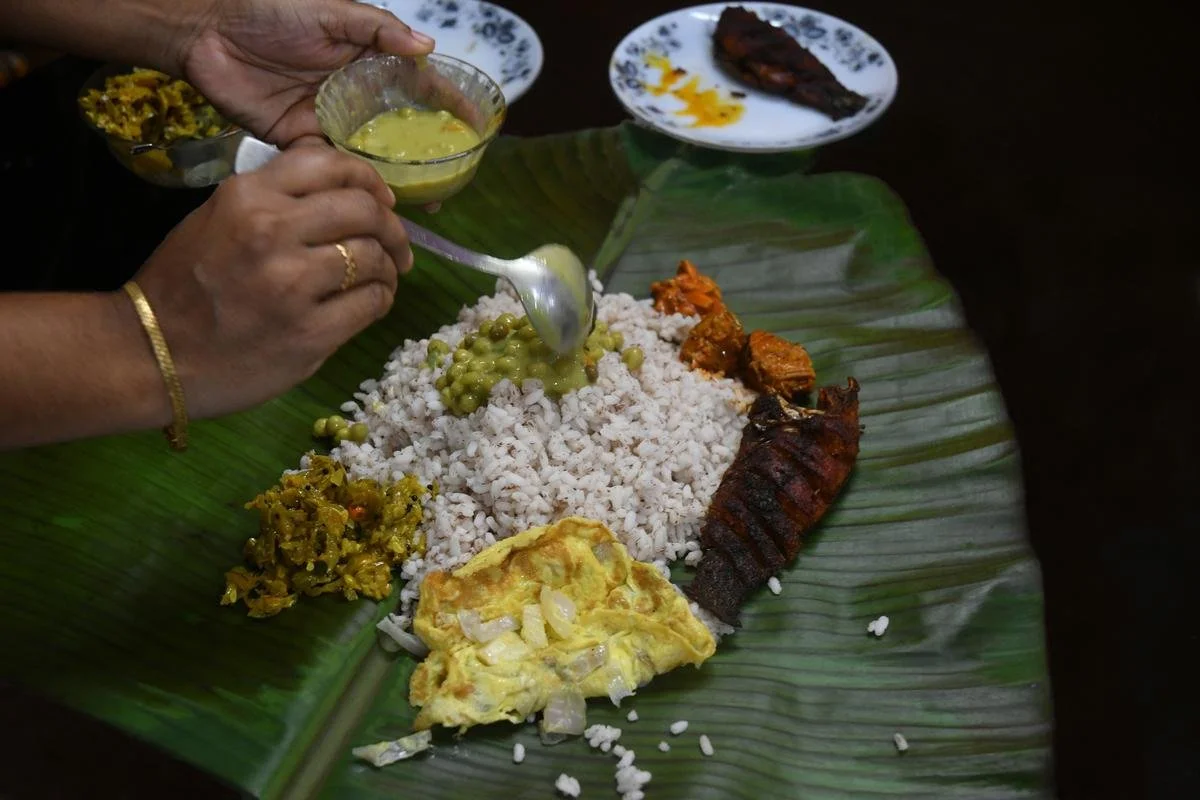Why the Ramassery Idli is Unlike Any Other

The Ramassery Idli is unique in ingredient, texture as well as cooking technique. But perhaps most interesting is that this is a recipe carefully preserved by 4 families in the village of Ramassery, close to Palakkad, in Kerala. Bindu Gopal Rao meets one of the original makers of the Ramassery idli.
Traditionally, the Ramassery idli is made only with rice sourced from Palakkad; the idlis are cooked over a muslin-covered earthen pot, and de-moulded using a specific leaf that lends a subtle fragrance to the rice cake. The idlis are then served alongside podi made from Palakkadan matta rice, and a complex blend of spices, best paired with Kerala-style sambar or a generous portion of chicken curry.
Chef Regi Mathew, Culinary Director of Kappa Chakka Kandhari, one of the first mainstream restaurants to serve the Ramassery idli, describes first sampling them at tea shops in Ramassery, as part of his culinary research prior to opening the restaurant. “These idli-makers belong to the Mudaliar community; weavers who migrated from Thanjavur in Tamil Nadu. As they travelled from one place to another, selling their wares, they carried these idlis with them.” They travel well, with a shelf life of 3-4 days.
The batter, made with rice, black gram, fenugreek and sea salt, is poured onto a muslin cloth that has been placed on the mouth of an earthen pot, and steamed. Unlike regular idlis, the steam passes right through the Ramassery style of idli. “The top of the idli is also covered with another earthen pot, trapping the steam to ensure it cooks from the top as well, making these idlis extremely soft,” explains Chef Regi. It is then de-moulded with plachi leaves and served hot.
Jeevanandan S, who runs Sankar Vilas, one of the two tea shops in Ramassery and lends his expertise at Kappa Chakka Kandhari, says, “I have been making these idlis for the last 30 years. It is my family legacy, passed on from my father and grandmother, and it is a tradition that I intend to continue.” This is his recipe.
Jeevanandan’s Recipe for Ramassery Idli
Ingredients
4 cups raw rice
4 cups ponni rice
2 cups split urad dal
1 tsp fenugreek
Sea salt, to taste
Method
Soak the rice and urad dal and fenugreek separately.
Soak the urad dal for lesser time than the rice, for a frothy batter.
Grind the rice and urad dal separately and mix together and allow to ferment for 6 hours.
Place a muslin cloth on the mouth of narrow-necked earthen vessel, and secure tightly with string.
Make small holes in the cloth.
Fill the vessel with water, and bring it to a boil.
Now place a wet muslin cloth over this, and pour the idli batter onto it.
Cover the batter with another earthen vessel as lid. Allow to steam for 5 minutes.
To remove, gently demould the idli using a banana leaf, and peel the muslin cloth gently off the top.
Your home-cooked Ramaserry idli is now ready to eat.
ALSO ON THE GOYA JOURNAL










